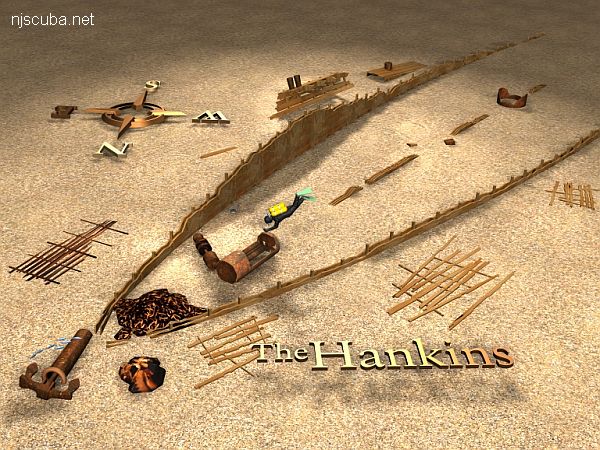
- Type:
- shipwreck, schooner barge(s)
- Sunk:
- late 1800s
- Depth:
- 80 ft
More: Hankins Wrecks ...
More: Manasquan Dive Sites Chart ...

More: Hankins Wrecks ...
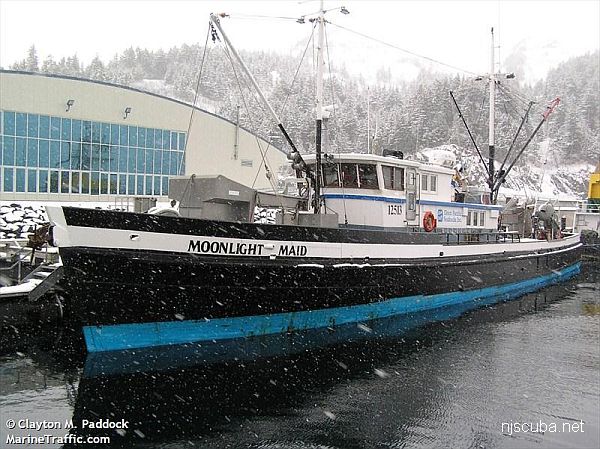
More: Ida K SC-1282 ...
More: Irene/Truro ...

probably nothing left but the engine, and that is probably buried
More: Joan LaRie III ...
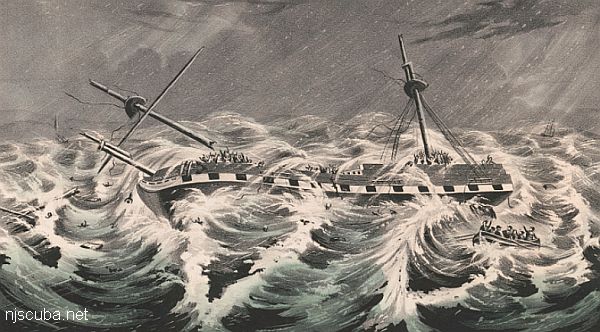
More: John Minturn ...
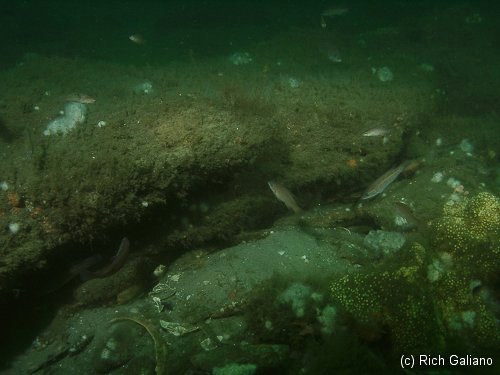
These low outcroppings appear in small to large patches over a two-mile area called the Klondike, and elsewhere, at depths ranging from 60 to 90 feet. The overhangs, crags, and holes afforded by the piles of rocks and boulders provide excellent homes for fish and lobsters. Visibility can be great here at times, but it is usually 10-20 ft, with a silty bottom in most places. The larger areas extend for many hundreds of feet, and an incautious diver can easily get lost. The stone itself is a type of sandstone known as Greensand, which occurs along the northern part of the New Jersey coast, and parts of Long Island, most famously as the Shrewsbury Rocks.
More: Klondike Rocks ...
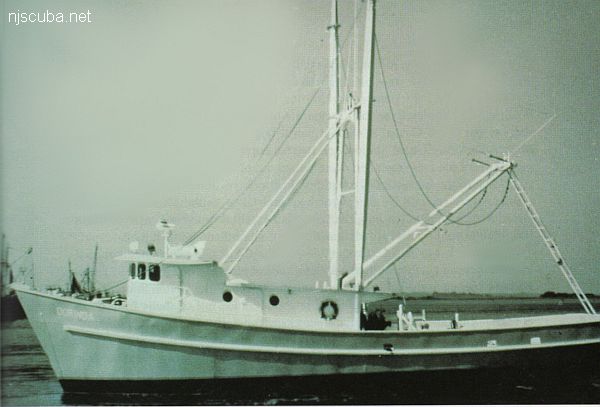
More: Lana Carol ...
This is erroneously called a tug, but its shape and size indicate that she was once might have been a small oiler or tanker. The wreck lies upright in the muddy bottom at 120 feet. She comes up 15 feet off the bottom in many places and is mostly intact. I have little idea of age, but her conditions suggest she's been there for 30-40 years or more.
More: Larsen ...
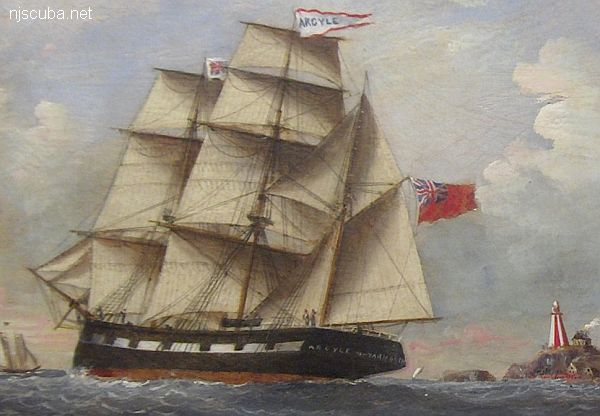
More: Lavallette Wreck - Argyle? ...
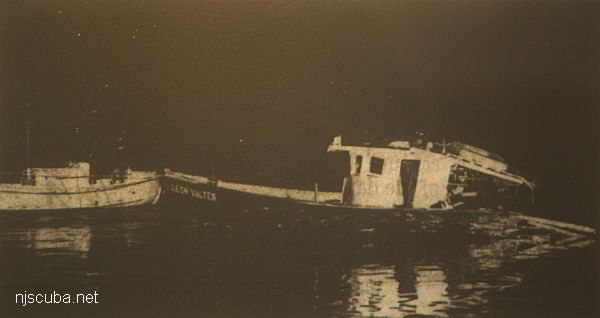
More: Leon Walter ...